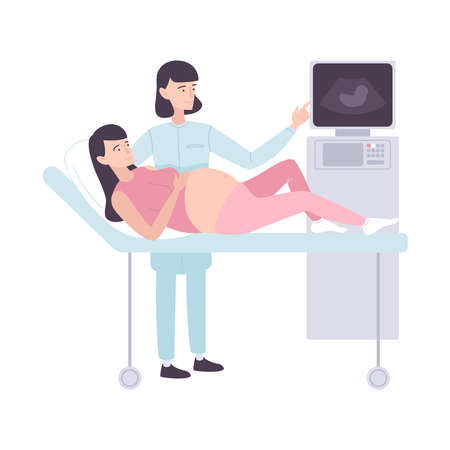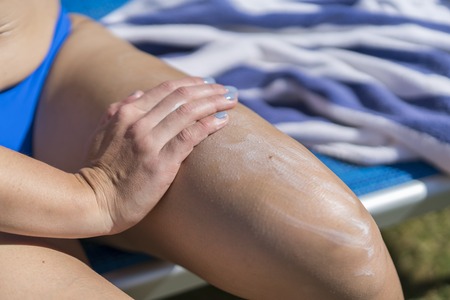Introduction to Radiofrequency Skin Tightening
Radiofrequency (RF) skin tightening is a non-surgical cosmetic treatment that has rapidly gained traction in the UK’s aesthetic landscape, particularly for areas such as the thighs and arms. This innovative technology utilises controlled radiofrequency energy to gently heat the deeper layers of the skin, stimulating collagen and elastin production. The result is a gradual tightening and smoothing effect, which helps address sagging skin, mild laxity, and uneven texture—common concerns for many seeking a more youthful silhouette without going under the knife.
The appeal of RF skin tightening lies not only in its minimally invasive nature but also in its suitability for a wide range of skin types and lifestyles. British clinics are seeing increased demand for these procedures due to their convenience, minimal downtime, and proven results. With advancements in technology and an emphasis on natural-looking outcomes, RF treatments have become a popular choice across the UK for those looking to rejuvenate their thighs and arms with subtle yet noticeable improvements.
Benefits and Suitability for Thighs and Arms
Radiofrequency (RF) skin tightening has become increasingly popular across UK clinics, especially for those seeking non-surgical solutions to address sagging or loose skin on the thighs and arms. This advanced technology offers several key advantages that make it a preferred option for many individuals looking to improve their body contours without significant downtime or invasive surgery.
Main Benefits of RF Skin Tightening
| Benefit | Description |
|---|---|
| Non-Invasive Approach | No incisions or surgical risks, making it ideal for those who wish to avoid more drastic procedures. |
| Stimulates Collagen Production | Encourages natural collagen synthesis, resulting in firmer, smoother skin over time. |
| Minimal Downtime | Most clients can resume normal activities immediately following treatment, with little to no recovery period required. |
| Visible Results | Improvements in skin texture and tightness are typically noticeable within a few weeks post-treatment. |
| Customisable Treatments | The procedure can be tailored to target specific areas of concern on both thighs and arms, accommodating various skin types and conditions. |
| Comfortable Experience | Treatments are generally well-tolerated with only mild warmth experienced during the session. |
Who Is an Ideal Candidate?
RF skin tightening is suitable for a wide range of individuals, but there are certain characteristics that define an ideal candidate:
- Mild to Moderate Skin Laxity: Those experiencing early signs of skin loosening, rather than severe sagging or excess fat.
- Stable Body Weight: Best suited for people who maintain a consistent weight and follow a healthy lifestyle.
- No Significant Underlying Health Issues: Individuals without contraindications such as pacemakers or certain metal implants.
- Realistic Expectations: Candidates who understand that results are gradual and that multiple sessions may be required for optimal outcomes.
- Aged 25–65: While not strictly limited by age, most clients fall within this range, as collagen production naturally decreases with age.
- Diverse Skin Types: Suitable for various skin tones and textures commonly found in the UK population.
When Might RF Not Be Suitable?
Certain conditions or circumstances may limit suitability. These include pregnancy, breastfeeding, active infections in the treatment area, or recent cosmetic procedures such as fillers or threads. It is essential to undergo a thorough consultation at your chosen UK clinic to ensure safety and the best possible outcome tailored to your unique needs.

3. The Treatment Process: What to Expect
Embarking on radiofrequency (RF) skin tightening for the thighs and arms in UK clinics involves a clear and professional journey, tailored to ensure both comfort and optimal results. Understanding each stage of the process helps you feel prepared and confident ahead of your appointment.
Initial Consultation and Preparation
Your treatment begins with an in-depth consultation at a reputable UK clinic. Here, a qualified practitioner will assess your skin’s condition, discuss your desired outcomes, and determine if RF skin tightening is suitable for you. You’ll be advised to avoid certain skincare products, such as retinoids or exfoliants, for a few days prior to your session. On the day itself, it’s best to arrive with clean, product-free skin on your thighs or arms. Loose, comfortable clothing is recommended to make changing easier before and after the procedure.
What Happens During the Procedure?
The actual treatment typically takes place in a private, clinical setting. The practitioner applies a cooling gel to the target area to enhance comfort and conductivity. Using a handheld RF device, controlled energy waves are delivered into the deeper layers of your skin. Most UK clients describe the sensation as a gentle warming or deep heat—noticeable but not painful. Some machines may offer pulsing or massaging motions that further soothe the experience. Throughout, your clinician will monitor temperature and your comfort closely, ensuring safety at every step.
Treatment Duration
A single session for thighs or arms usually lasts between 30 and 60 minutes, depending on the size of the area being treated and the specific technology used. For best results, practitioners often recommend a series of sessions spaced a week or two apart. You’ll be given guidance on how many treatments you’ll likely need based on your individual skin tone and goals.
Aftercare Guidance
Once your session is complete, there’s minimal downtime—you can generally return to normal activities straight away. Some mild redness or warmth may persist for an hour or two post-treatment but quickly subsides. Your clinician will provide tailored aftercare advice, which may include avoiding hot baths or vigorous exercise for 24 hours and using gentle moisturisers on treated areas.
By understanding what to expect from start to finish, you can approach RF skin tightening treatments in UK clinics with confidence and peace of mind—knowing you’re receiving safe care designed for visible results.
4. Results: Realistic Outcomes and Timeframes
When considering radiofrequency (RF) skin tightening for the thighs and arms in the UK, understanding what results to expect is essential for making an informed decision. While individual outcomes can vary, most reputable UK clinics provide guidance based on clinical experience and patient feedback.
Expected Results from RF Skin Tightening
Patients typically notice a gradual improvement in skin texture, firmness, and mild reduction in laxity. The effects are most apparent in those with mild to moderate skin looseness rather than severe sagging. It’s important to note that RF treatments generally do not produce the dramatic results of surgical options, but they do offer a subtle, natural-looking enhancement without downtime.
Timeline for Visible Changes
| Treatment Stage | What to Expect | Typical Timeframe |
|---|---|---|
| Immediately After Treatment | Mild swelling or redness, slight skin tightness | Same day – 24 hours |
| Short Term (1–2 weeks) | Initial skin firming, improved hydration | 1–2 weeks post-treatment |
| Medium Term (4–8 weeks) | Noticeable collagen production and tightening effect | After 1–2 sessions |
| Long Term (3+ months) | Cumulative improvements in tone and smoothness with continued treatments | Following course completion (usually 3–6 sessions) |
UK Clinical Examples and Patient Experiences
A review of leading UK clinics—such as those based in London, Manchester, and Birmingham—demonstrates consistent satisfaction among patients seeking non-invasive firming for thighs and upper arms. For example, The Cadogan Clinic in London reports that most clients begin noticing visible tightening after their second session, with optimal results seen approximately three months after completing a full course of treatments. Similarly, UK-based testimonials often mention increased confidence wearing sleeveless clothing or shorts after undergoing RF therapy.
Factors Influencing Effectiveness
- Age and Skin Quality: Younger patients or those with good baseline skin elasticity tend to respond more quickly.
- Lifestyle Factors: Smoking, excessive sun exposure, or significant weight fluctuations can diminish the longevity of results.
- Treatment Frequency: Regular maintenance sessions—as recommended by your clinic—help sustain improvements.
- Technology Used: Advanced RF devices such as Exilis or Forma may deliver superior outcomes compared to older equipment.
In summary, radiofrequency skin tightening on thighs and arms offers realistic yet modest enhancements when performed at experienced UK clinics. While patience is necessary as collagen builds gradually, adherence to your practitioner’s advice ensures you achieve the best possible results tailored to your unique needs.
5. Finding the Right UK Clinic
Choosing a trustworthy clinic for radiofrequency skin tightening on thighs and arms is crucial to achieving safe, effective results. With the popularity of non-surgical aesthetic treatments rising across the UK, it’s essential to ensure you are in experienced hands. Here’s how to navigate the selection process with confidence.
Check for Reputable Certifications
Always confirm that your chosen clinic is registered with the Care Quality Commission (CQC) in England or the equivalent regulatory body in Scotland, Wales, or Northern Ireland. Practitioners should hold qualifications in aesthetics or dermatology, and ideally be members of professional associations such as the British Association of Cosmetic Nurses (BACN) or the British College of Aesthetic Medicine (BCAM). These credentials provide assurance that practitioners adhere to rigorous safety and ethical standards.
Ask the Right Questions During Consultation
Your consultation is a vital opportunity to assess both the expertise of your practitioner and the suitability of the treatment for your needs. Key questions to ask include:
- How much experience do you have with radiofrequency skin tightening, particularly on thighs and arms?
- What device or technology do you use, and is it approved by UK regulatory bodies?
- Can I see before-and-after photos from previous clients with similar concerns?
- What side effects and risks should I be aware of?
- How many sessions will I likely need, and what results can I realistically expect?
Additional Considerations
Look for clinics that offer a clear aftercare plan and transparent pricing structures—hidden fees or vague treatment plans are red flags. Reading independent patient reviews on platforms like Trustpilot or Google Reviews can also provide valuable insight into others’ experiences. Ultimately, prioritising clinics with robust safety protocols and a patient-centred approach will help ensure a positive outcome for your radiofrequency skin tightening journey.
6. Aftercare and Recovery in the UK Context
Essential Aftercare Tips
Following radiofrequency skin tightening on your thighs and arms, adhering to proper aftercare is crucial for optimal results and a smooth recovery. Clinics across the UK typically advise patients to keep the treated area clean and well-moisturised, using gentle, fragrance-free products. Avoiding hot showers, saunas, or vigorous exercise for at least 24-48 hours post-treatment helps minimise swelling and irritation. It’s best to wear loose, breathable clothing during the initial recovery phase to prevent friction against sensitive skin.
Recovery Expectations
Most clients in the UK can expect minimal downtime after radiofrequency treatments. Mild redness, warmth, or slight swelling are common but usually subside within a few hours to a day. You can generally return to work or daily activities almost immediately, making this procedure popular among those with busy lifestyles. For optimal outcomes, multiple sessions spaced several weeks apart are often recommended by practitioners.
Potential Side Effects
While side effects are typically minor and temporary, it’s important to be aware of what might occur. Some people may experience tingling, temporary bruising, or minor discomfort in the treated areas. If you notice any persistent pain, blistering, or signs of infection, contact your clinic promptly for advice.
Tailoring Aftercare to UK Weather and Lifestyle
The British climate—often cool and damp—can affect your post-treatment routine. During colder months, protect treated skin from harsh winds and cold air with soft layers, but avoid excessive heat from hot water bottles or electric blankets. In summer or during rare sunny spells, apply a broad-spectrum SPF to exposed areas as freshly treated skin can be more sensitive to UV rays. Given the active lifestyle many Brits enjoy—whether commuting by foot or engaging in outdoor activities—it’s wise to plan your treatment around quieter periods if possible to give your skin time to settle undisturbed.
By following these tailored aftercare guidelines and maintaining open communication with your UK-based clinic, you can ensure a safe recovery process and achieve long-lasting skin tightening results on your thighs and arms.

